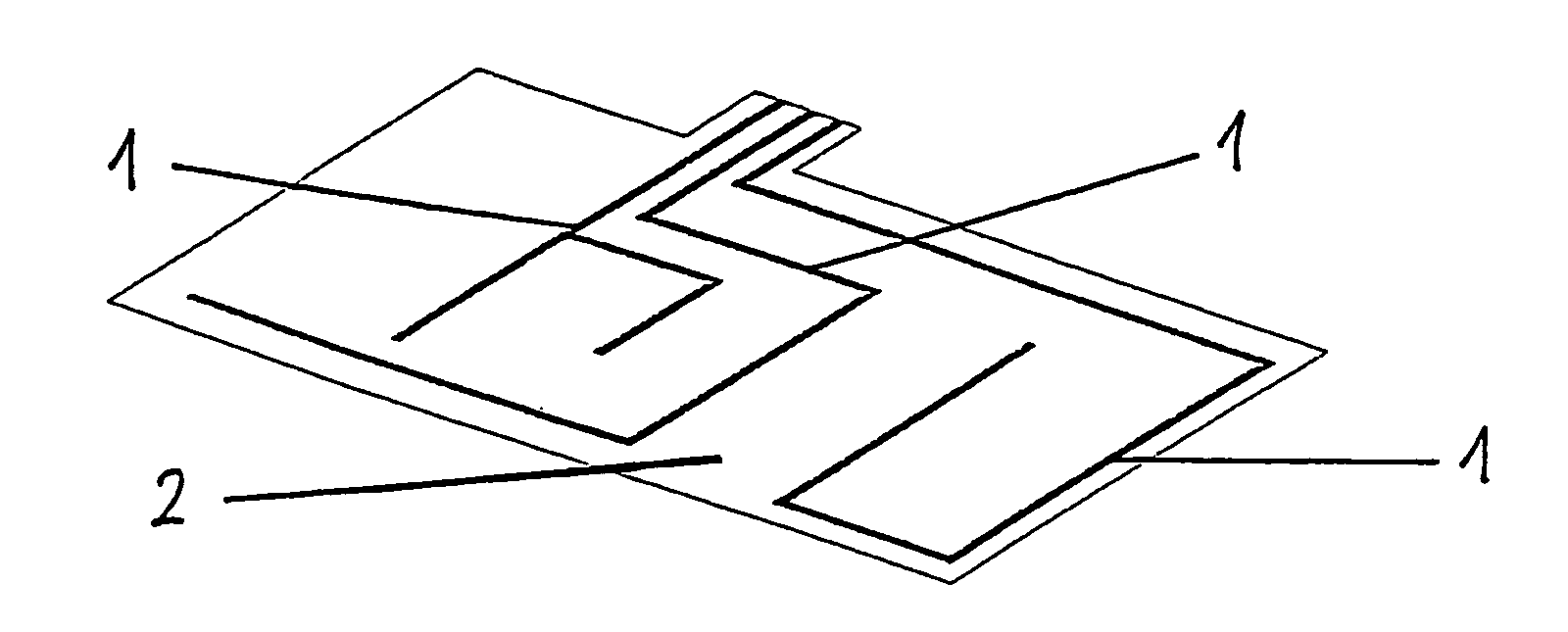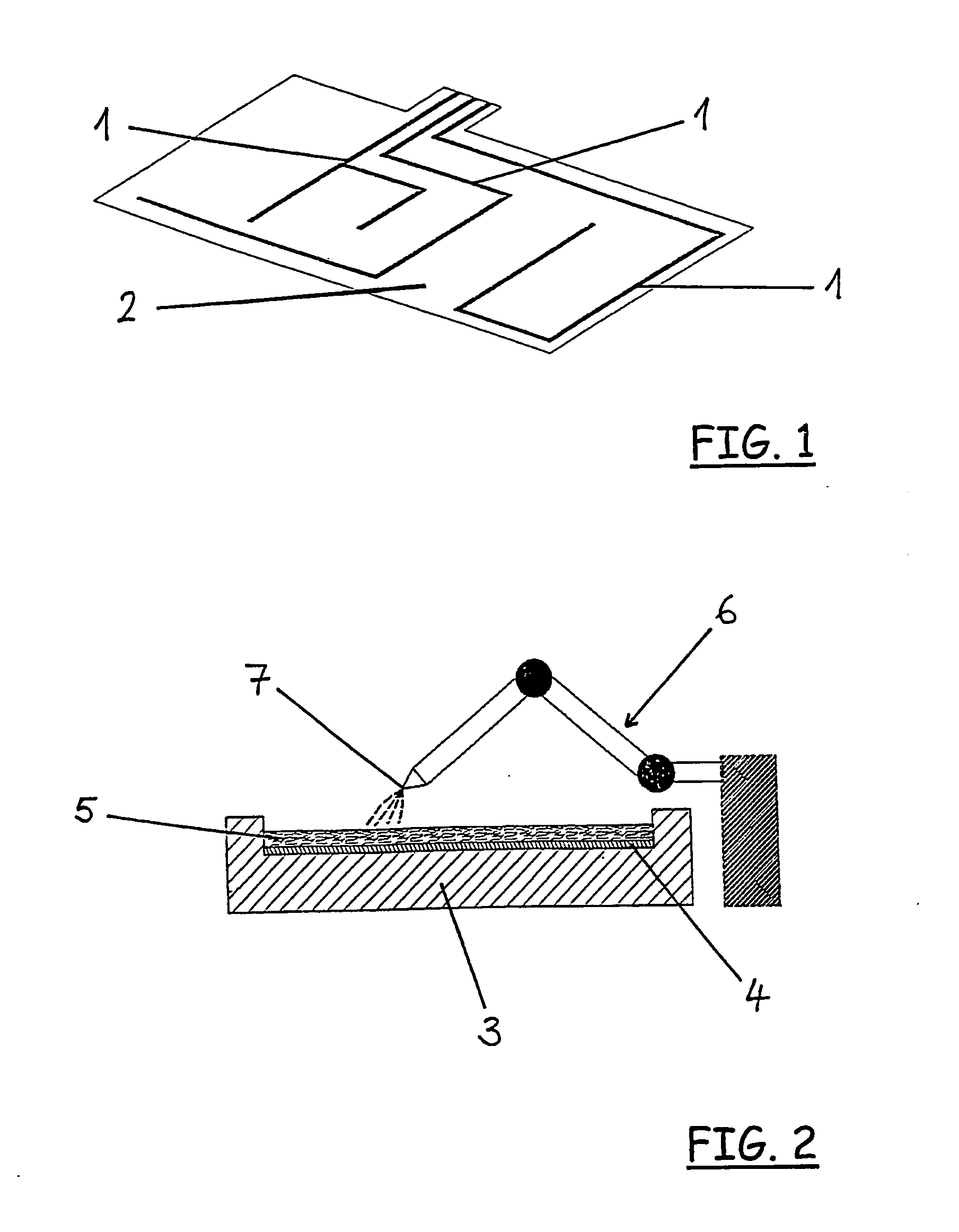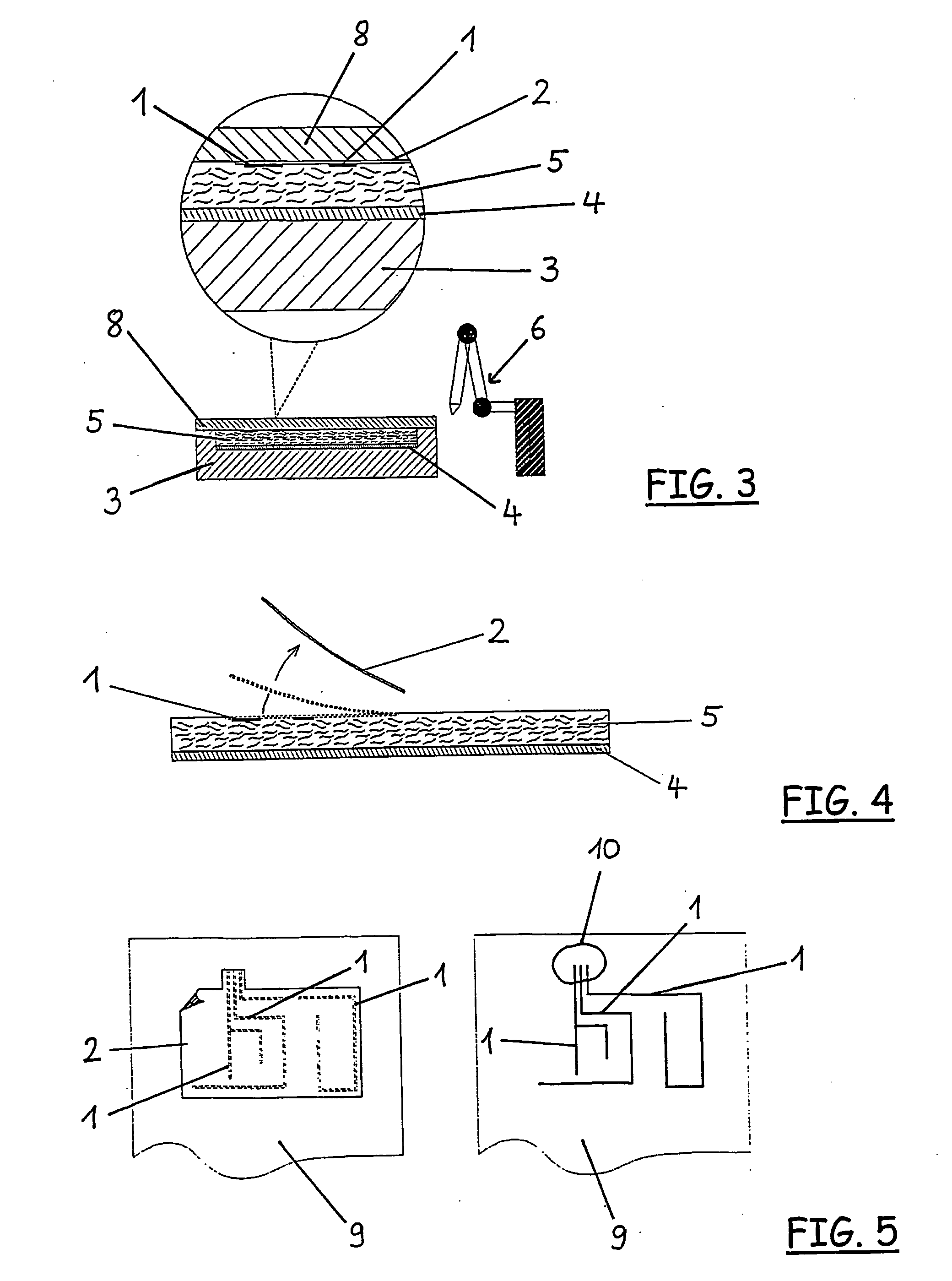Method for Applying Electrical Conductor Patterns to a Target Component of Plastic
a technology of electrical conductors and target components, applied in the direction of printed circuit components, porous dielectrics, printed circuit dielectrics, etc., can solve the problems of retrospective application of conductor structures, complex installation processes, and inability to ensure the durability of the conductor structures required on the target component for the subsequent operation of the motor vehicle, etc., to achieve adequate flexibility, simple, quick and cost-effective
- Summary
- Abstract
- Description
- Claims
- Application Information
AI Technical Summary
Benefits of technology
Problems solved by technology
Method used
Image
Examples
Embodiment Construction
[0004]The object of the invention is therefore to provide a method of applying electric conductor structures to a plastic target component, which is simple to do and which avoids the disadvantages described above. Furthermore, a target component having electric conductor structures produced according to the method is to be provided.
[0005]This object is attained by the characteristics of patent claim 1.
[0006]According to the invention a transfer medium, on which the conductor structures are mounted in a detachable manner, is introduced into a mold part (also called a mold), and the mold part is then filled with a plastic material, and after the filling process the finished target component is removed from the mold part. This method has the advantage that initially the conductor structures are applied to a transfer medium, and in a particular embodiment of the invention the transfer medium is a film made of plastic. The use of a transfer medium further has the advantage that it only h...
PUM
| Property | Measurement | Unit |
|---|---|---|
| electric | aaaaa | aaaaa |
| flexible | aaaaa | aaaaa |
| pressure | aaaaa | aaaaa |
Abstract
Description
Claims
Application Information
 Login to View More
Login to View More - R&D
- Intellectual Property
- Life Sciences
- Materials
- Tech Scout
- Unparalleled Data Quality
- Higher Quality Content
- 60% Fewer Hallucinations
Browse by: Latest US Patents, China's latest patents, Technical Efficacy Thesaurus, Application Domain, Technology Topic, Popular Technical Reports.
© 2025 PatSnap. All rights reserved.Legal|Privacy policy|Modern Slavery Act Transparency Statement|Sitemap|About US| Contact US: help@patsnap.com



